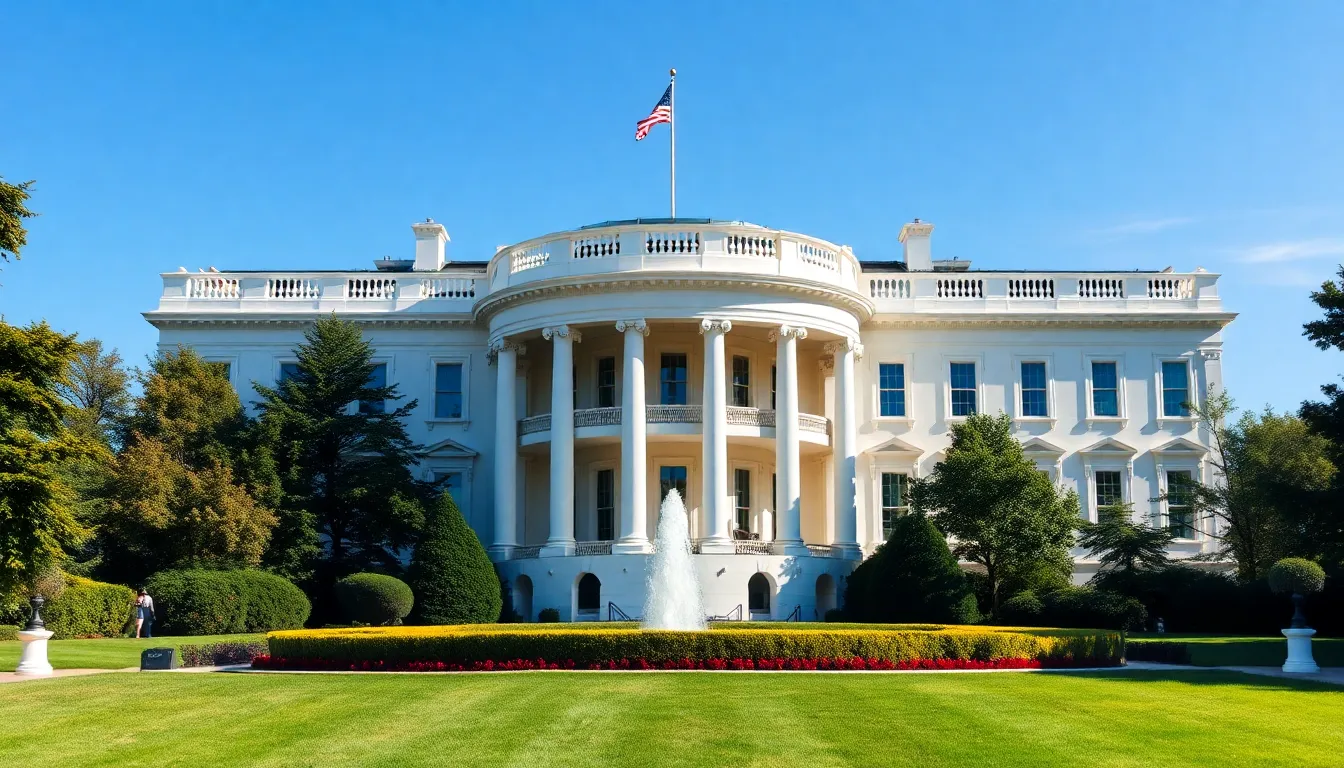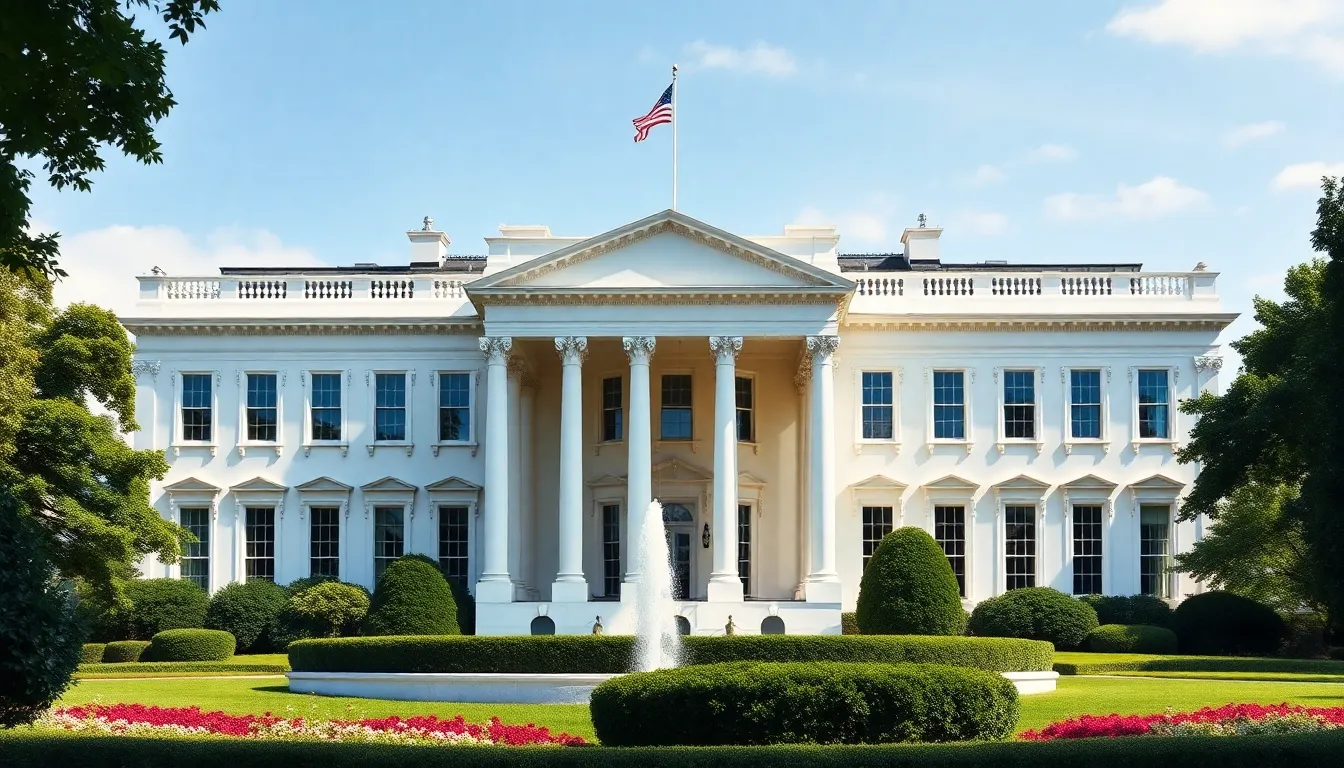Nestled in the heart of Washington D.C., the Casa Branca, or White House, stands as a symbol of power, history, and the occasional Twitter storm. This iconic residence isn’t just where presidents live; it’s a backdrop for some of the most significant moments in American history. From state dinners that could rival the best Michelin-starred restaurants to impromptu press conferences that leave everyone scratching their heads, the Casa Branca is where the magic—and sometimes the chaos—happens.
But don’t be fooled by its grandeur. Behind those stately columns and manicured lawns lies a world of fascinating stories, quirky traditions, and a few ghostly inhabitants. Whether you’re a history buff, a political junkie, or just someone who enjoys a good scandal, the Casa Branca has something for everyone. Buckle up as we dive into the captivating tales that make this house truly one of a kind.
Table of Contents
ToggleCasa Branca Washington: A Brief Overview
Casa Branca, known as the White House, serves as the official residence of the President of the United States. Established in 1800, it stands as a monumental symbol of American democracy and governance. Architectural design combines neoclassical elements with modern conveniences, enhancing its historical significance.
Signature features include the iconic portico, grand rooms, and lush gardens that tell stories of the nation’s history. Each room carries weighty narratives, from the Oval Office to the East Room, where numerous state functions occur. The White House also hosts various events, reflecting cultural diversity through art, architecture, and décor.
Recognized worldwide, the Casa Branca influences political and social events on a global scale. Visitors encounter a range of tours that showcase its historical and cultural importance. Tours provide insights into the lives of past presidents and their families, along with unforgettable anecdotes of important meetings and decisions made within its walls.
Legends surrounding the White House add a layer of intrigue. Some claim that spirits of past presidents still wander the halls. Folklore and ghost stories captivate those interested in the paranormal, drawing attention to the residence’s rich tapestry of history and myth.
Casa Branca not only functions as a government building but also embodies the American spirit. Its significance continues to evolve as it adapts to modern times while preserving its storied past. The White House remains a focal point, attracting millions of visitors eager to learn more about its enduring legacy.
History of Casa Branca

The Casa Branca, widely recognized as the White House, has a rich historical narrative that traces its origins and evolution.
Construction and Design
Construction began in 1792 under the guidance of President George Washington. James Hoban, the Irish-born architect, designed the structure in a neoclassical style, combining elegance with functionality. The building’s iconic white Aquia Creek sandstone exterior lends it the name “White House.” Its portico supports a grand entrance, showcasing imposing columns. Completed in 1800, the Residence has undergone several renovations over the years, ensuring that it meets modern standards while preserving its historical essence. In 1902, Theodore Roosevelt initiated significant renovations, promoting an open floor plan and updating facilities. The design reflects American ideals, serving as a backdrop for influential political activities.
Key Historical Events
Several pivotal moments in American history unfolded at the Casa Branca. The first official event, a reception hosted by John Adams in 1800, marked the start of its role as the executive residence. During the War of 1812, British forces set fire to the building, leading to extensive restoration efforts. Significant legislation, such as the Emancipation Proclamation by Abraham Lincoln, took shape within its walls. The White House also witnessed various landmark decisions, including civil rights discussions during Lyndon B. Johnson’s presidency. In more recent years, it has served as a stage for global diplomacy, hosting leaders from around the world, solidifying its status as a hallmark of American leadership.
Architectural Features
The Casa Branca showcases a blend of neoclassical design and historical significance. Both its exterior and interior reflect the rich heritage of American architecture.
Exterior Design
The exterior of the White House features white Aquia Creek sandstone, providing a striking facade. Design elements include the iconic portico with its six columns, creating a grand entrance. A symmetrical layout enhances its elegance, while the iconic roofline adds a distinctive profile against the Washington skyline. Lush gardens, designed by Frederick Law Olmsted, surround the property, contributing to its picturesque setting. Every detail in the exterior design embodies the ideals of democracy and power, reinforcing the building’s significance as a national symbol.
Interior Design
The interior of the White House boasts numerous rooms, each uniquely styled and historically significant. The East Room serves as a grand venue for ceremonial events, showcasing its extensive artwork and elegant decor. The Oval Office stands out as the President’s working space, reflecting personal style through chosen furnishings. Rich colors, luxurious materials, and intricate moldings grace the various rooms, demonstrating refined craftsmanship. Notable historical artifacts placed in key areas tell stories of past presidencies, enhancing the space’s cultural value. Every room within the White House reveals layers of American history, captivating visitors who step inside its walls.
Significance in American Politics
The White House serves as the epicenter of American political activity. Its role extends beyond being a residence; it embodies the executive branch’s authority with its historical and contemporary significance. Symbolic functions include hosting critical meetings and signing significant legislation often determining national policy.
Major decisions impacting the nation transpire within its walls. Civil rights discussions during Lyndon B. Johnson’s tenure exemplify how the White House facilitates profound legislative changes. Hosting global leaders further reinforces its stature in international diplomacy, making it a crucial player on the world stage.
Key historical moments are interwoven into the fabric of the White House. Events like the signing of the Emancipation Proclamation mark pivotal shifts in American history. These moments resonate deeply within American politics, illustrating the institution’s influence over time.
Political traditions flourish in this iconic structure. Ceremonial events, such as state dinners, illustrate the cultural significance tied to the role of the presidency. Diverse individuals from various sectors converge, highlighting the intersection of power, politics, and social interactions.
Public engagement with the White House fosters a deeper understanding of the nation’s political landscape. Tours offer insights into the lives of past presidents, revealing the human side of political leadership. Visitor experiences, enriched by anecdotes, often highlight moments of governance that shaped the course of history.
Architectural features contribute to its political power. The neoclassical design communicates permanence and stability, reinforcing the presidency’s authority. This deliberate architectural choice connects the past with present governance, making the White House an enduring symbol of American leadership.
Visiting Casa Branca
Visiting Casa Branca, or the White House, allows individuals to explore a pivotal piece of American history. Tours provide firsthand insights into its historical and political significance.
Tour Information
Tours of the White House typically run Tuesday through Saturday, with advance reservations required. Each tour lasts 45 minutes and accommodates small groups, ensuring an intimate experience. Visitors must submit a request through a Member of Congress or their embassy, with tours often booked months in advance. Engaging guides lead attendees through the building’s iconic rooms, sharing stories and historical anecdotes. Expect to see the East Room, the Blue Room, and the Oval Office, among others. Accessibility options ensure everyone can enjoy the tour.
Nearby Attractions
Numerous attractions surround the White House, enriching the visitor experience. The Washington Monument, only a short walk away, stands as a symbol of the nation’s capital. The National Mall features an array of memorials and museums, including the Abraham Lincoln Memorial and the Smithsonian Institution. Visitors can also take a stroll through Lafayette Square, a historic park that offers great views of the White House’s façade. Exploring the nearby Renwick Gallery showcases American craft and decorative arts, enriching the cultural experience. Other landmarks, such as the U.S. Treasury and the Old Executive Office Building, enhance the area’s historical significance.
The Casa Branca stands as a testament to American history and political power. Its architectural beauty and rich narratives draw countless visitors each year. Every room within its walls tells a story of leadership and legacy, making it a vital part of the nation’s identity.
With its blend of history and modernity the White House continues to be a beacon of democracy and culture. Whether exploring its iconic rooms or delving into the legends that surround it visitors leave with a deeper appreciation for the role it plays in shaping the United States. The Casa Branca isn’t just a building; it’s a symbol of the American spirit.



